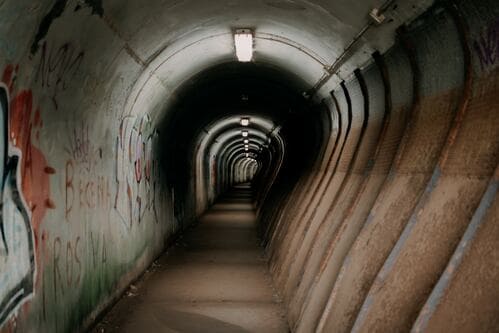This fiber optic technology has become a modern and advanced approach that attends several functions: diagnostic and simultaneous monitoring.
Structural Health Monitoring Operation Principle
The continuous structural health monitoring gives an opportunity to accumulate data about an object’s state. Thanks to the information obtained, specialists can use it to predict possible damage in the future and extend the service life. And fiber optic solutions provide a whole system that consists of fiber optic sensors, data collecting and transmitting units, etc.
Implementation of the fiber optic system involves review of the design processes of structural elements, a change of the processes, etc. For normal operation, parameters should stay at the allowable ranges that were previously determined and recorded in the program by specialists.
In fact, the factors that can influence the structural condition can be divided into two categories:
- Negative external factors that have a constant impact on the material. This includes high or low temperatures, humidity, etc.;
- Force-majeure circumstances, such as floods, volcanic eruptions, earthquakes, etc.
FBG Sensors for SHM Systems
Fiber optic sensors are proven to bring benefits to specialists as a part of the structural health monitoring system, including for civil construction. Compared to the electrical sensors, fiber optic sensors offer several advantages, including resistance to electromagnetic interference that is crucial in many applications.
Fiber optic technology can transmit data over several kilometers. Their other features such as long-term stability and reliability help them to function in severe environments. FBG sensors have been examined, for example, for implications in ice and snow. Fiber optic sensors are susceptible to the mechanical and chemical impacts of the concrete constructions. Despite that, they are mainly used in concrete environments for constructions such as bridges and dams. However, FBG sensors are able to effectively operate in such conditions for a considerable time.
Still scientists are going to design and experiment with fiber Bragg grating sensors further to find their limitations in new applications. Various types of fiber optic sensors were produced to provide measurements of diverse physical and chemical characteristics. Fiber Bragg grating temperature sensors are used for structural health monitoring of civil engineering structures, as it was mentioned above. In certain concrete based building structures there is a need for FBG strain sensors or FBG moisture sensors. From the other side, concrete structures are affected by formation of cracks and moisture ingress resulting in operation failure.
Fiber Optic Sensors for Sewage Tunnels
One of the fields where fiber optic sensors are used is a structural health monitoring system for sewage tunnels. The main reason for the sewage systems’ damages is excessive loading. It may be caused by constant physical effects like corrosion, penetration of plant roots, etc. The damage can be also caused by natural disasters such as landslides and floods. The consequences of all these impacts can greatly reduce the constructions’ operation life and lead to failures in operating.
That’s the reason why fiber Bragg grating sensors are essential in structural health monitoring systems. FBG sensors are able to constantly monitor and predict these events in advance. Thus, specialists have an opportunity to prevent great damage or at least minimize the economic losses.
Thanks to the fiber optic sensors that structural health monitoring includes, this technology is proved to be cost-effective in different applications. The modern approach provides quick and simple-in-use monitoring of various kinds of structures.
Optromix is a fast-growing vendor of fiber Bragg grating (FBG) product line such as fiber Bragg grating sensors, for example, FBG strain sensors, FBG interrogators and multiplexers, Distributed Acoustic Sensing (DAS) systems, Distributed Temperature Sensing (DTS) systems. The company creates and supplies a broad variety of fiber optic solutions for monitoring worldwide. If you are interested in structural health monitoring systems and want to learn more, please contact us at info@optromix.com

